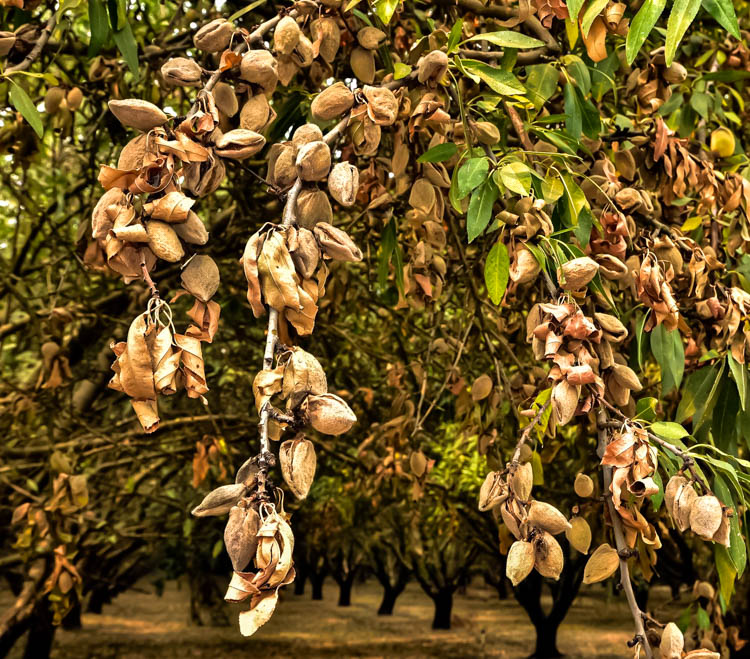If you are an almond grower, you may have encountered a problem called hull rot. Hull rot is a fungal disease that affects the hulls of nuts on almond trees. It can cause big losses in almond farming, and it can also impact other permanent crops. Understanding the basics about almond hull rot and identifying factors is important. This knowledge will help you manage this disease that can permanently destroy fruiting wood on your tree.
What is Almond Hull Rot and What’s Causing It
Hull rot is an infection in almonds caused by one of several fungi. This infection not only causes quality and yield reduction, but it can also kill the spur and the shoot attached to the fruit. Furthermore, it will reduce the productivity of the tree in future years. Hull rot usually occurs several weeks before harvest, when the hulls begin to split and expose the nuts.
The most common fungi that cause hull rot are Monilinia and Rhizopus. Monilinia is the same fungus that causes brown rot on stone fruits, while Rhizopus is a common mold that can spoil flour products and other foods. You can tell them apart by looking at the color of the fungal growth on the hulls. Monilinia produces pale tones of brown color growth on the inside or outside of the hull, while Rhizopus produces black growth on the inside of the hull.
More recently, other fungi have also been implicated in almond hull rot, such as Aspergillus, Penicillium, Alternaria, and Botrytis. These fungi may cause different symptoms, such as forming a green or gray mold on the hulls, but they all result in shoot dieback and loss of fruiting wood.
How Can We Prevent and Control Hull Rot
The best way to prevent and control hull rot is by managing tree vigor through proper irrigation and fertilization practices. Almond trees are susceptible to hull rot fungi from the beginning of hull split until the hulls dry, which can last from 10 days to 2 months depending on the weather and the orchard management. The hulls are full of nutrients and water, which provide an ideal environment for fungal growth.
To reduce the risk of hull rot, you should avoid excess fertilizer applications 45 to 60 days before hull split. Excess nitrogen can increase the susceptibility of the hulls to fungal infection and prolong their drying time. You should also take leaf samples in July to check the nitrogen levels, which need to be below 2.6%.
Another crucial factor is irrigation management. You should reduce irrigation at the onset of hull split to limit the water availability for the fungi and speed up the drying of the hulls. This practice is called regulated deficit irrigation (RDI) and it can reduce hull rot by 60 to 70%. You should avoid standing water at hull split, as it can increase humidity and favor fungal growth.
Some almond varieties are more susceptible to hull rot than others. The most susceptible varieties are Nonpareil, Monterey, Sonora, Fritz, and Winters. Hard-shelled varieties such as Mission, Davey, and Drake may exhibit rotted hulls but rarely shoot dieback. You may want to consider planting resistant varieties or interplanting them with susceptible ones to reduce disease pressure.
Fungicide treatments may also help control hull rot, especially if caused by Rhizopus. Fungicides which belong to the demethylation inhibitor (DMI; FRAC group 3) or quinone outside inhibitor (QoI; FRAC group 11) groups are highly effective against this fungus. A single application at hull split, timed with the navel orangeworm insecticide treatment, may reduce hull rot incidence by 60% to 70%. However, fungicides are not highly effective against Monilinia or other fungi that cause hull rot.
Conclusion
Hull rot is a serious disease that can affect almond trees and reduce their yield and quality. By following these tips, you can prevent and control this disease and protect your trees from permanent feature damage.
